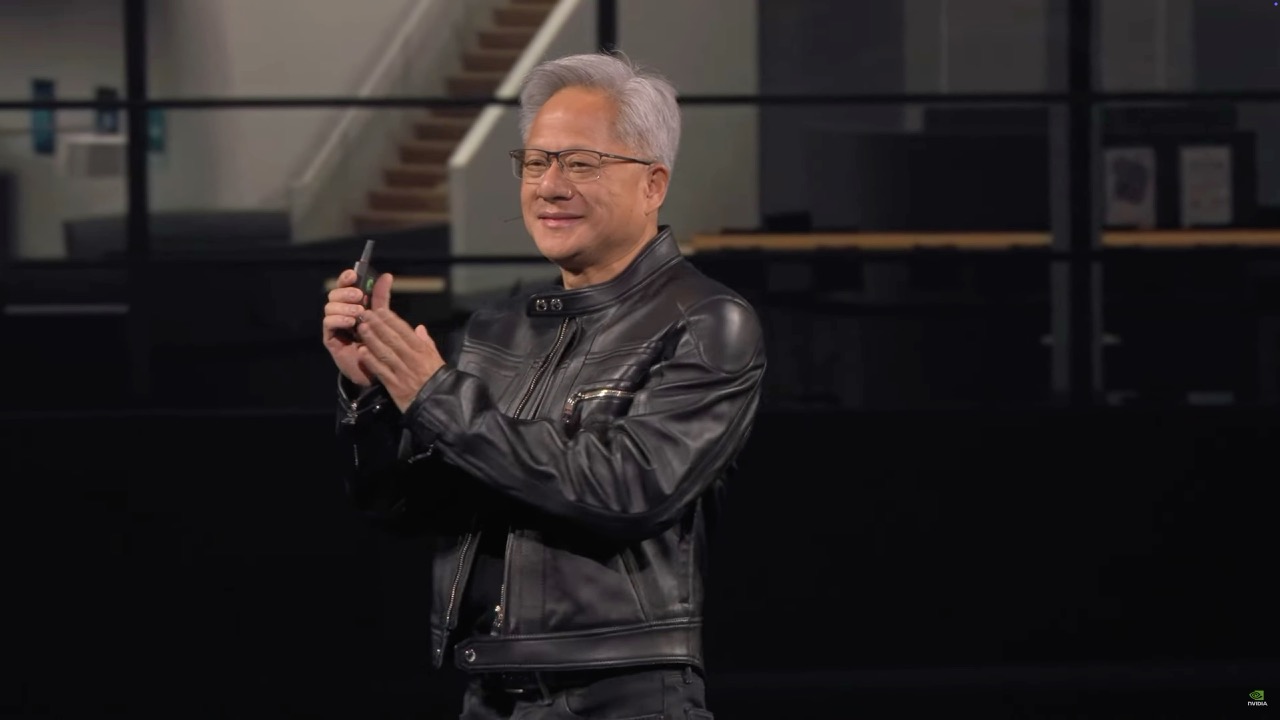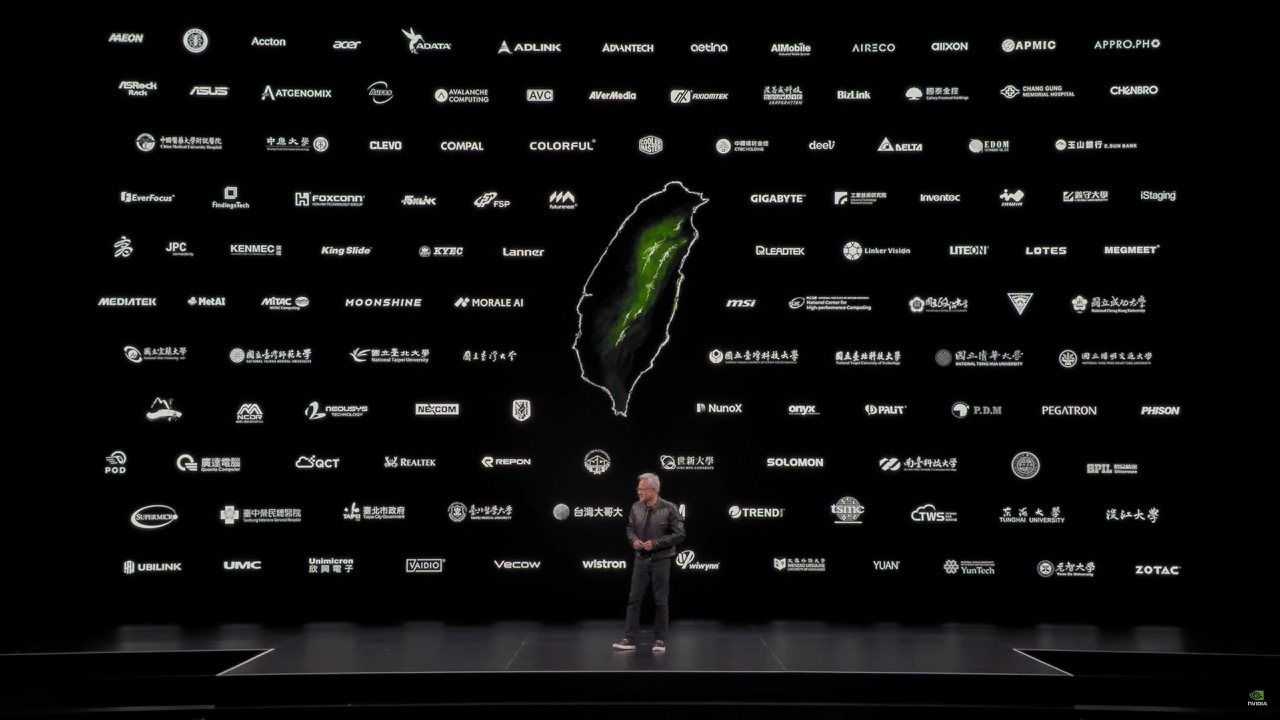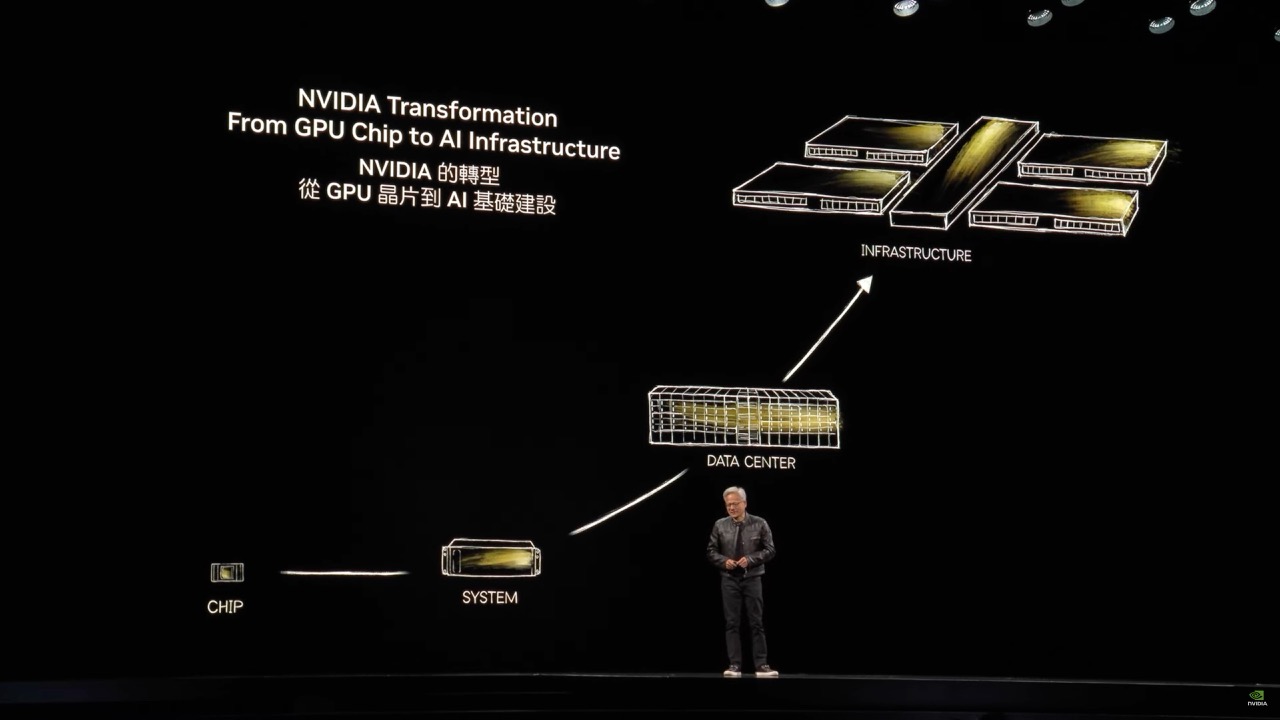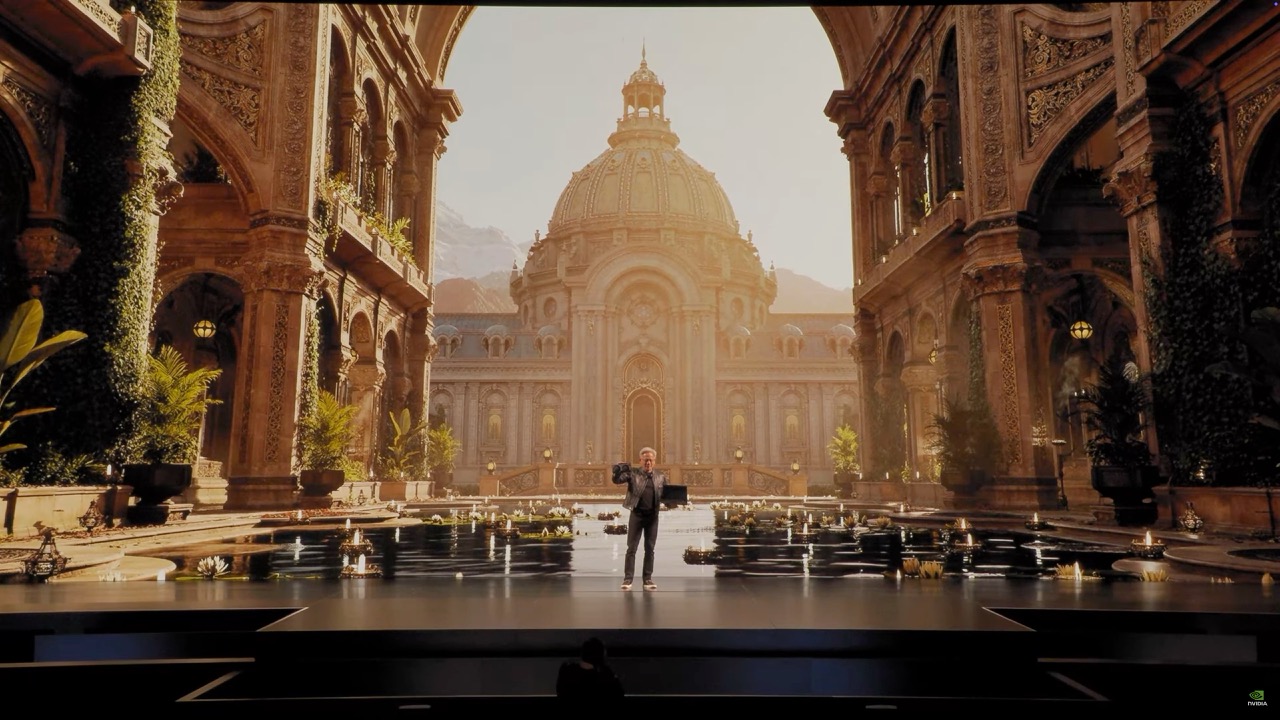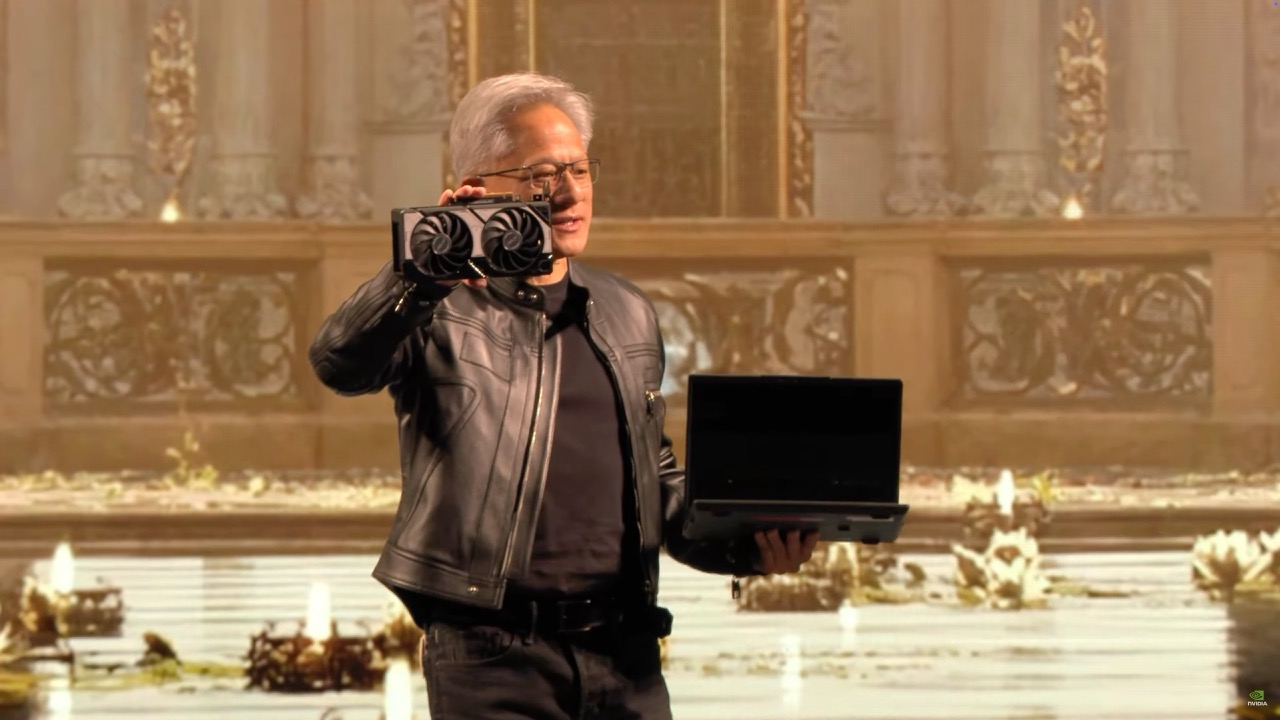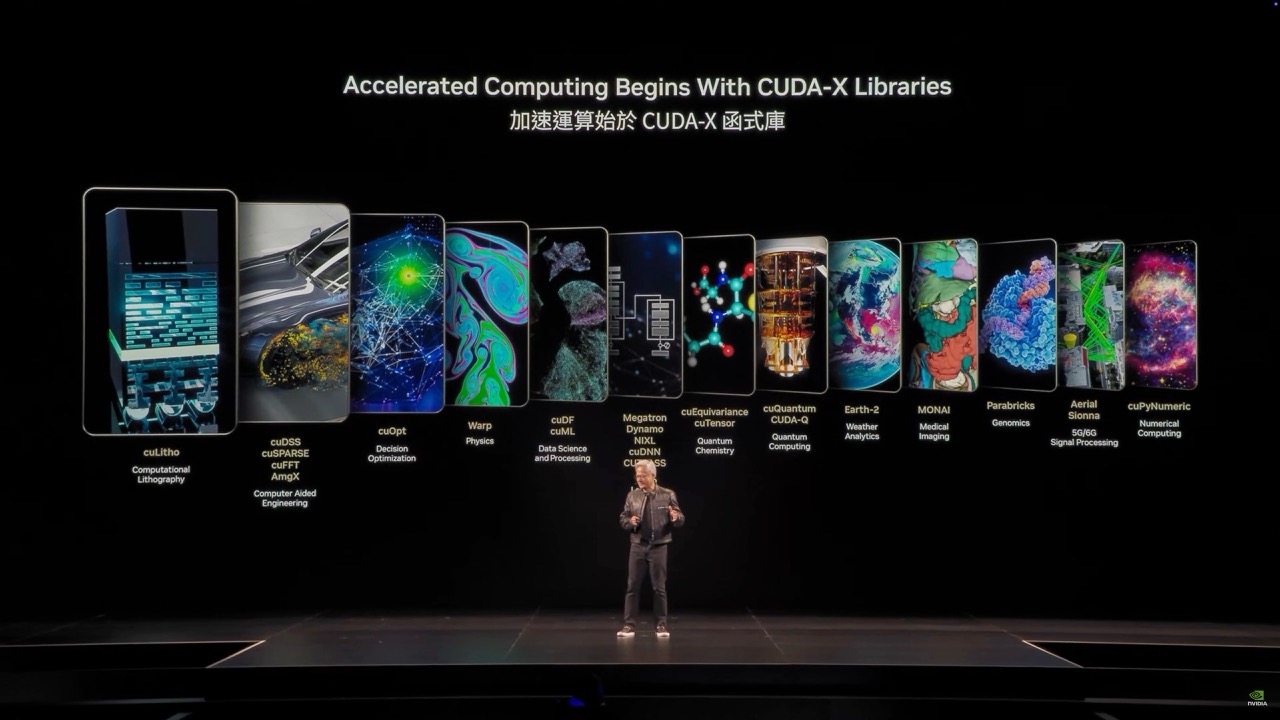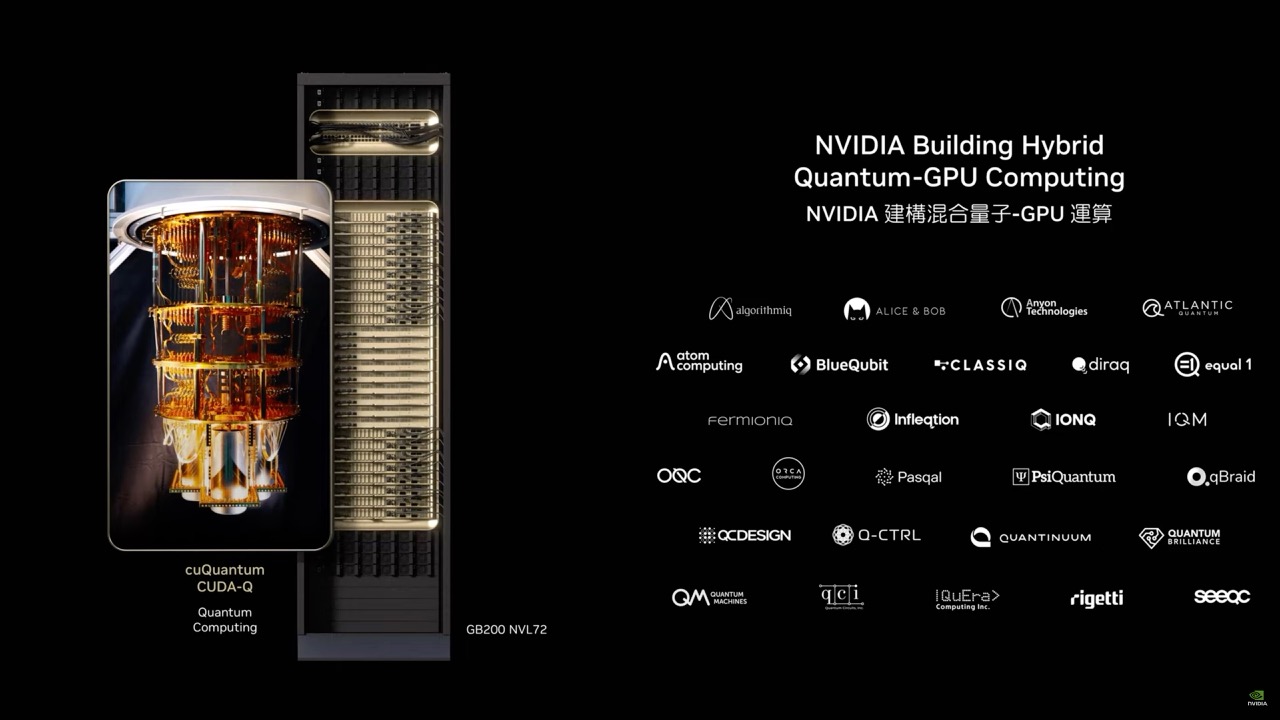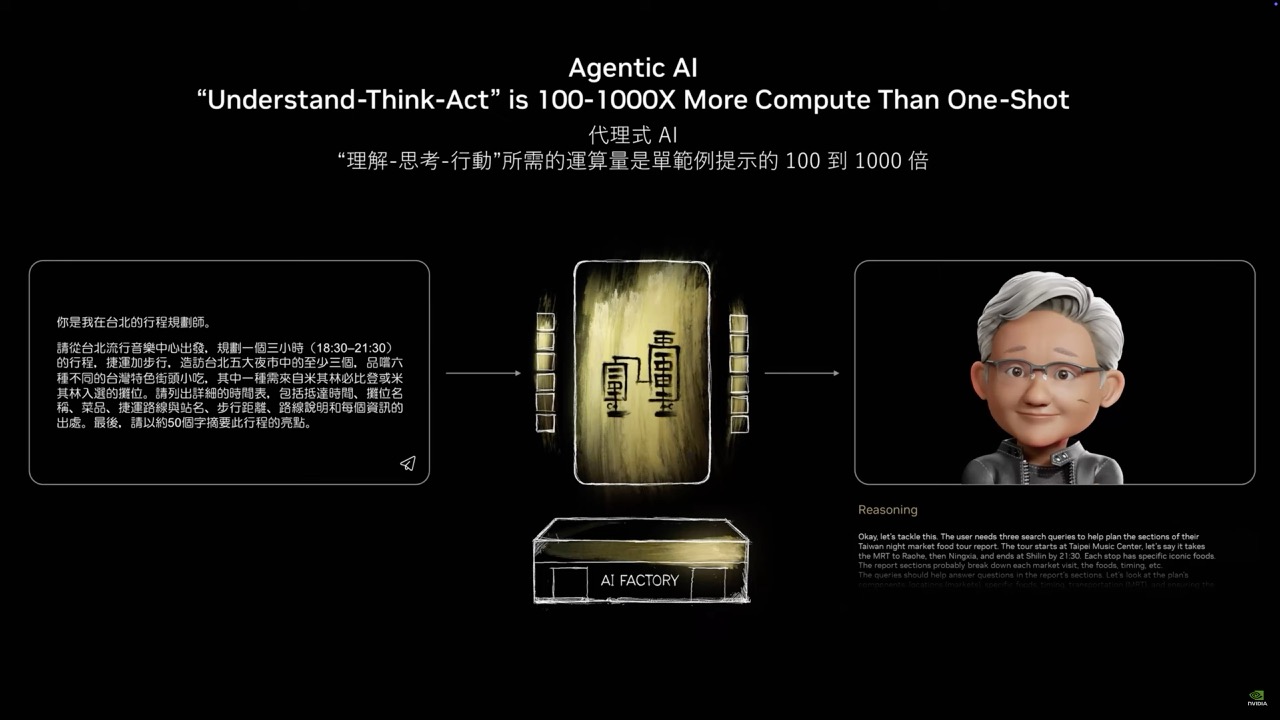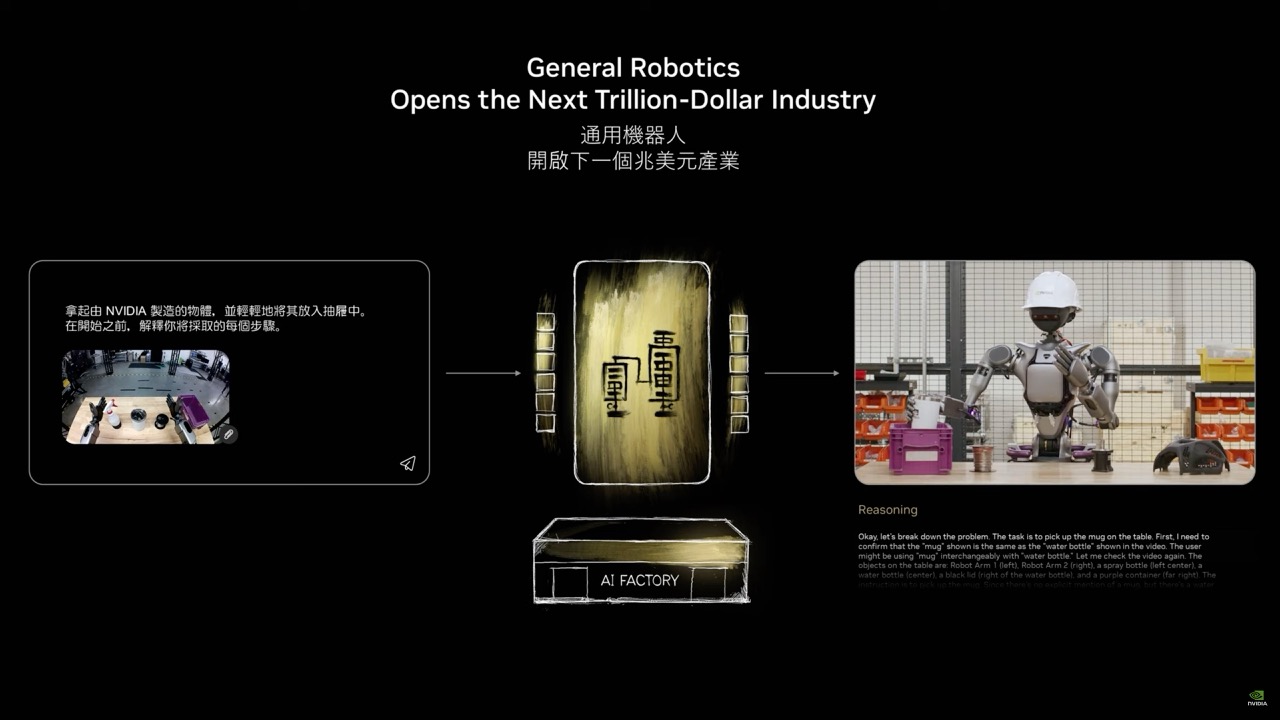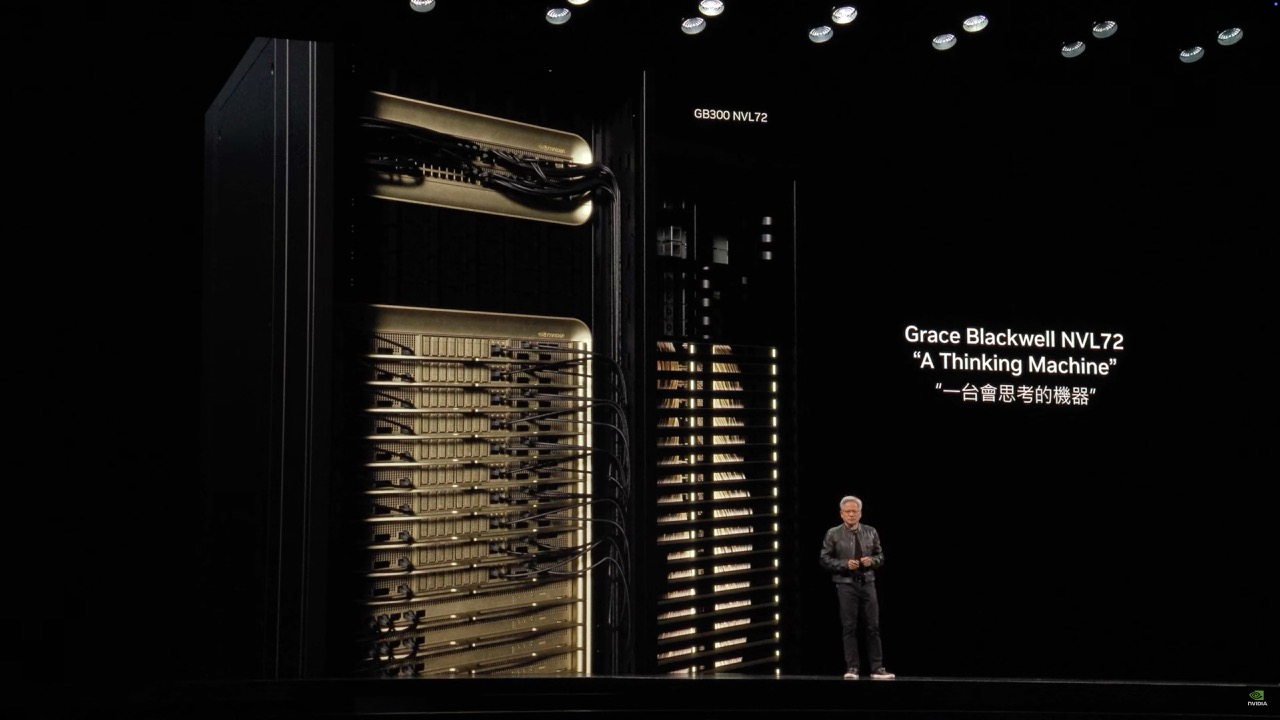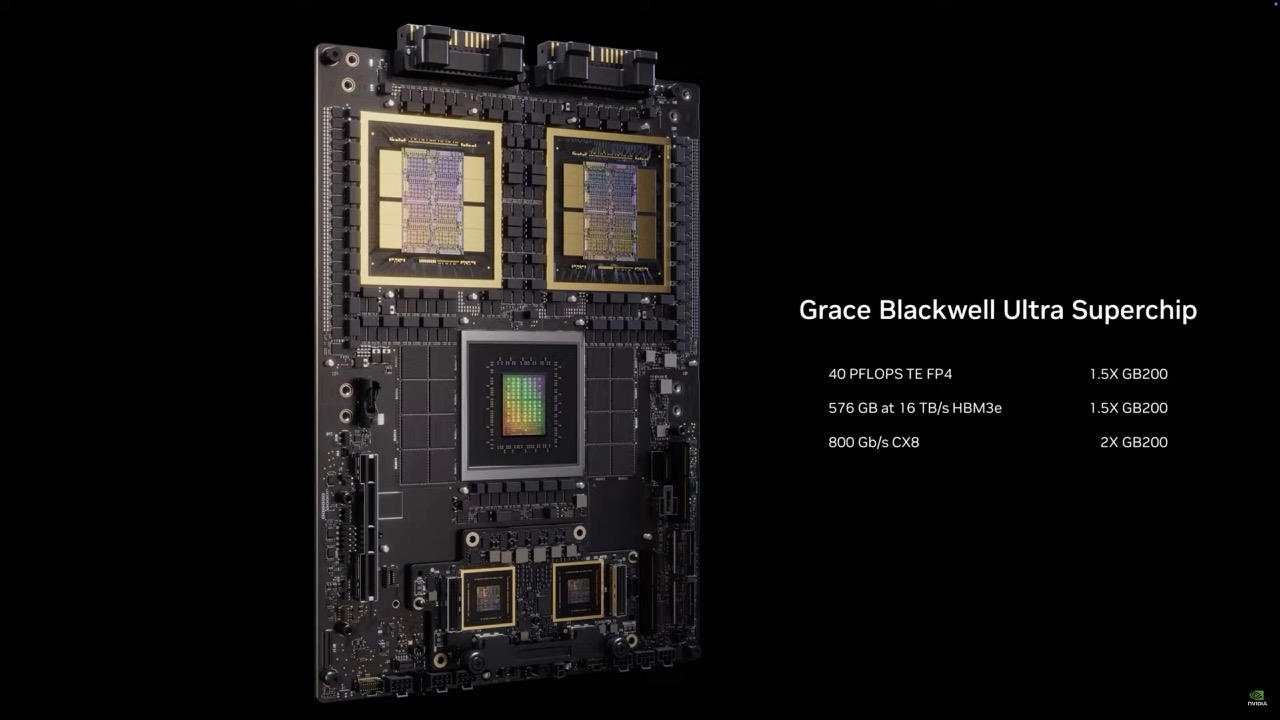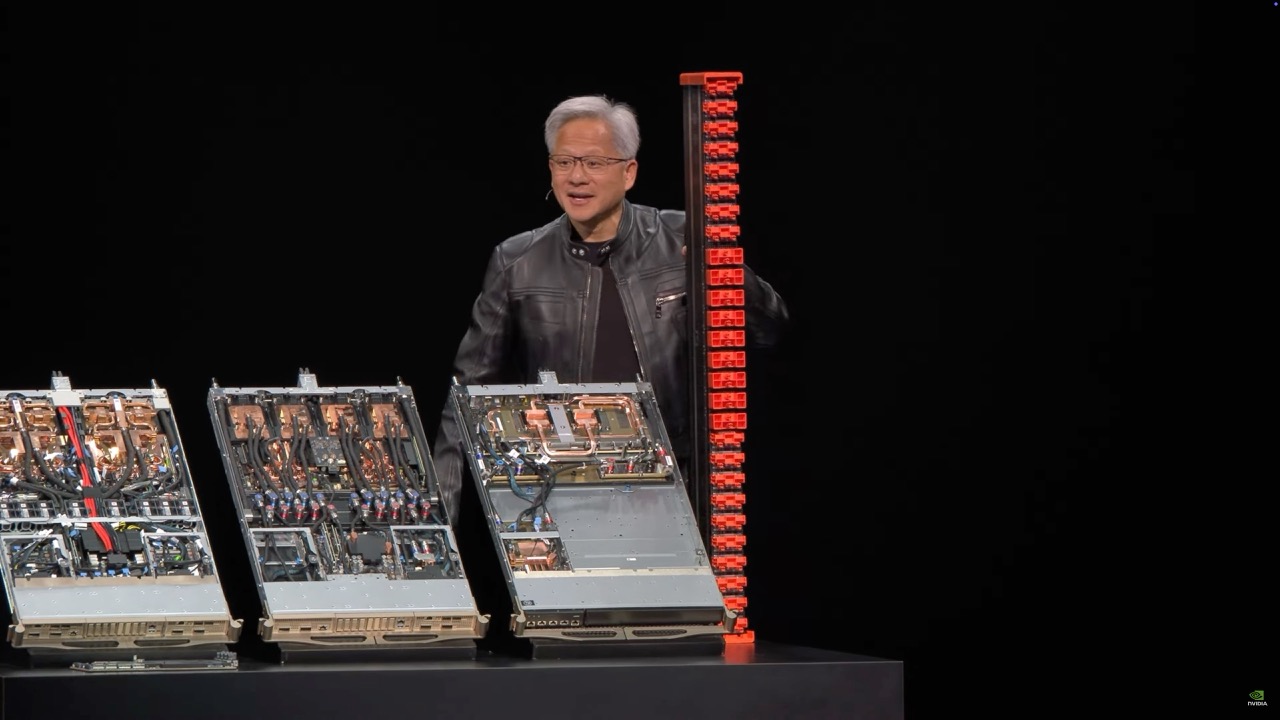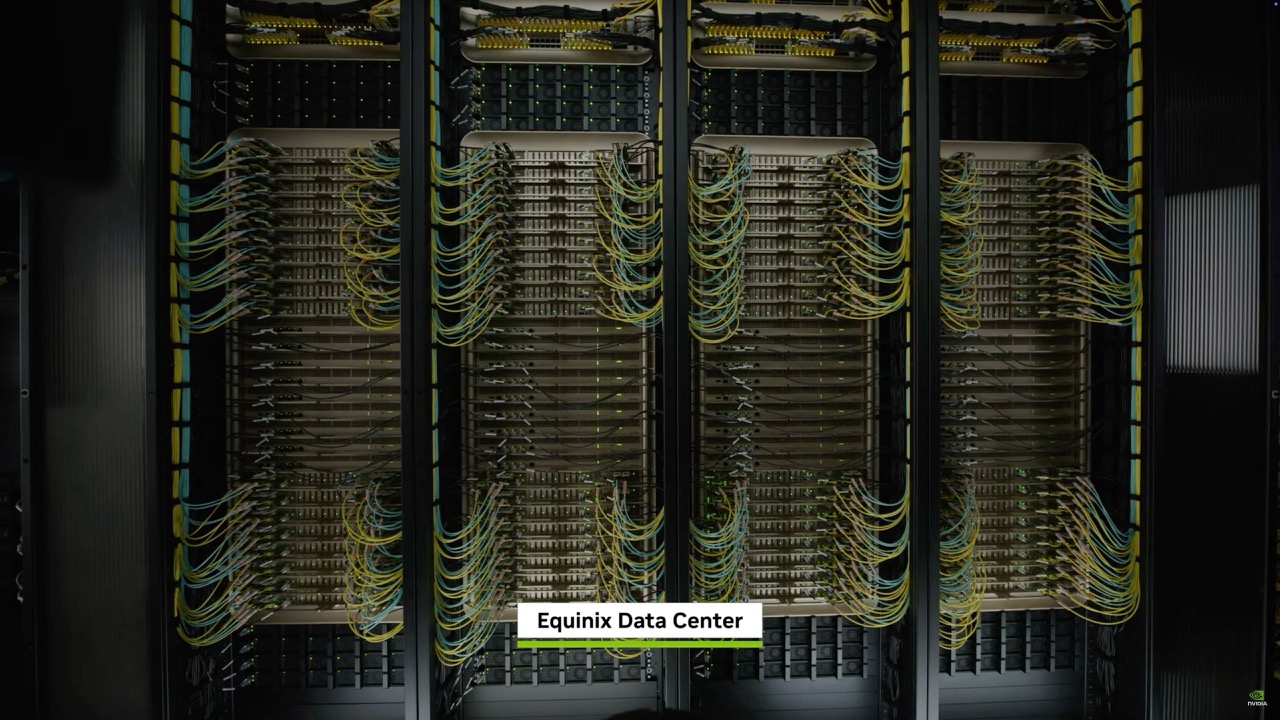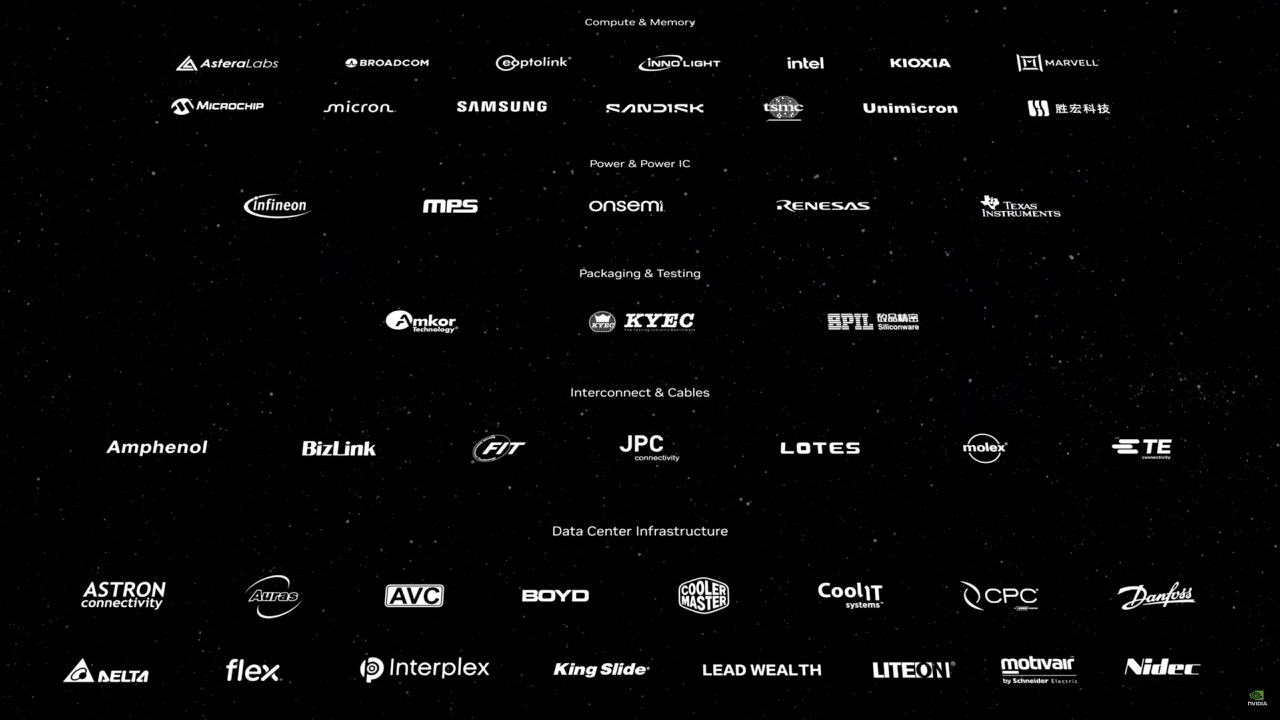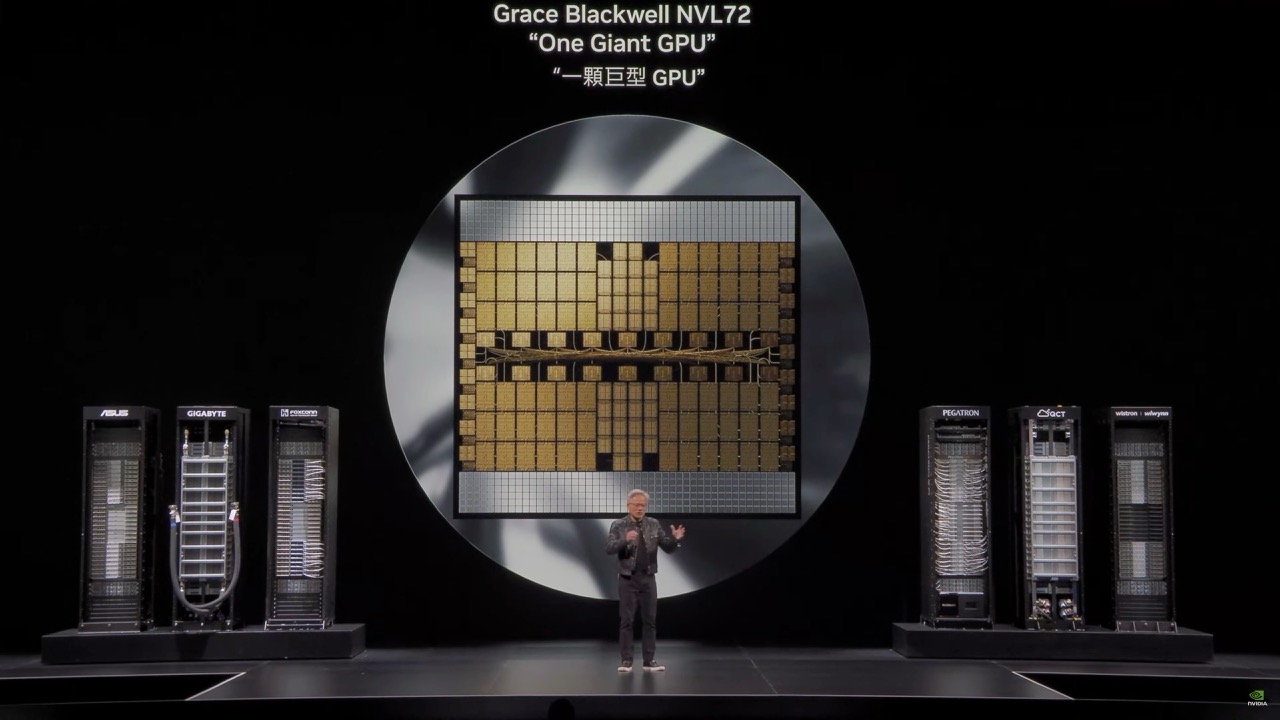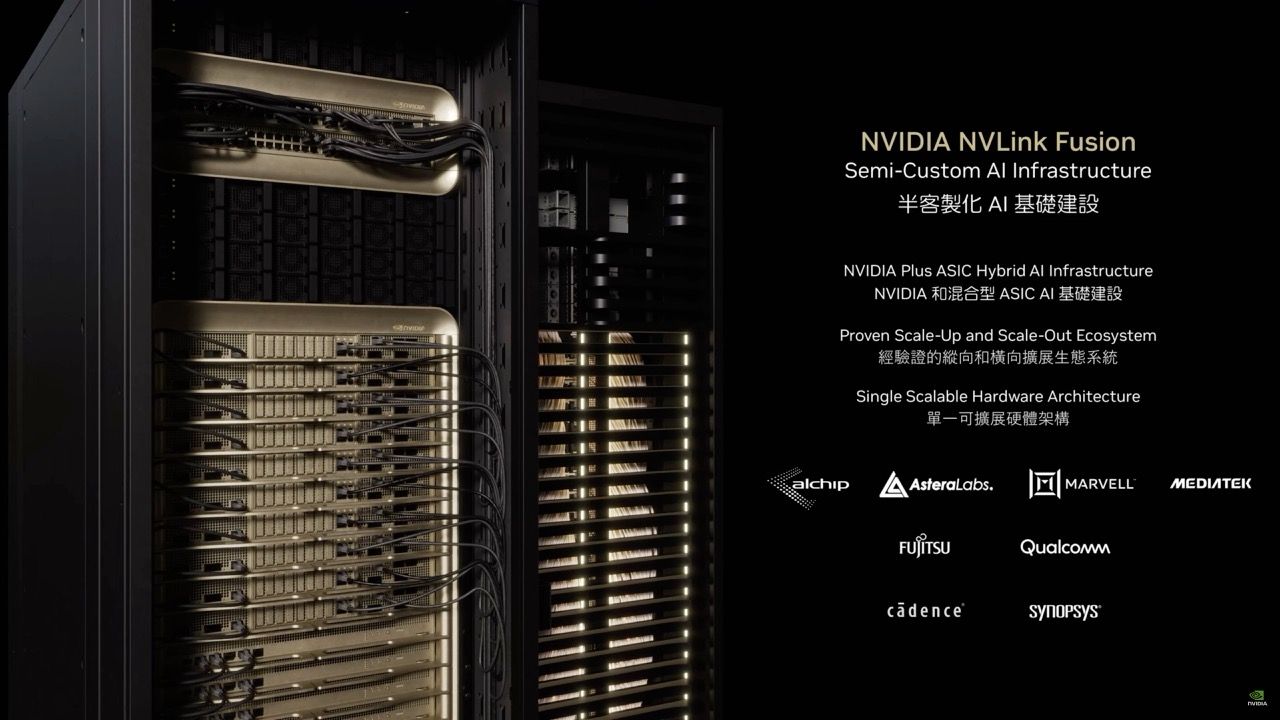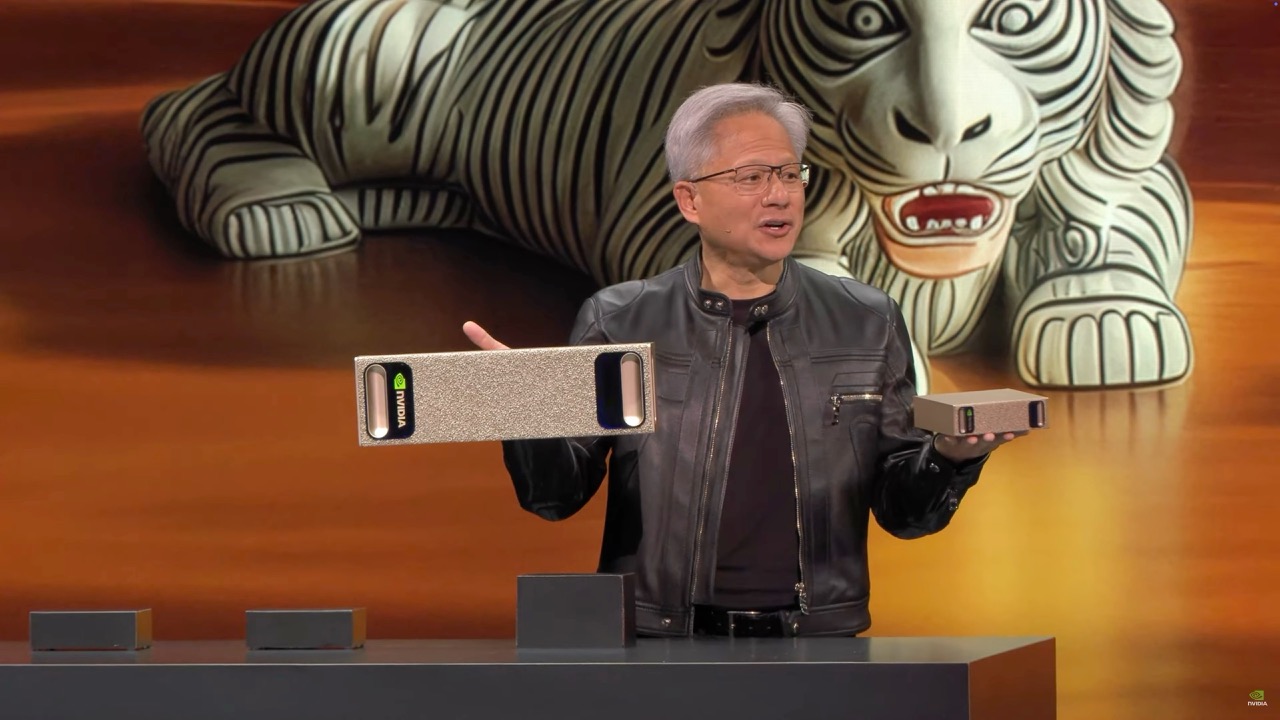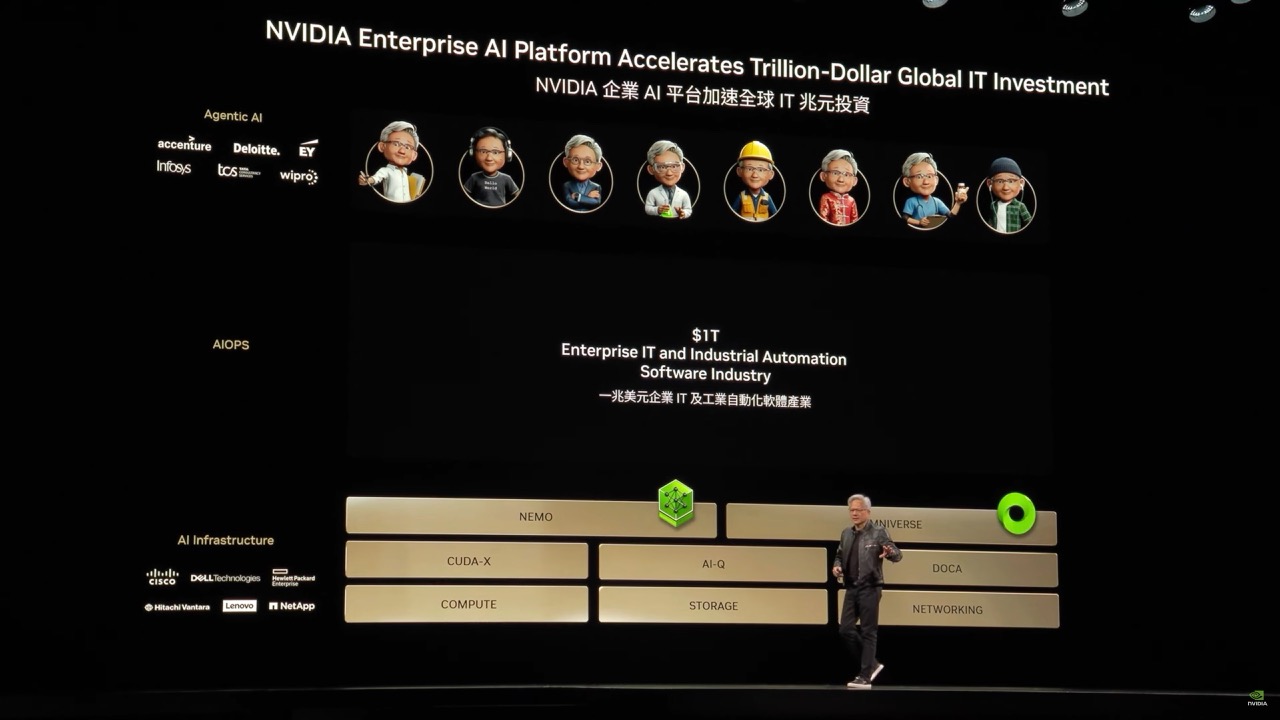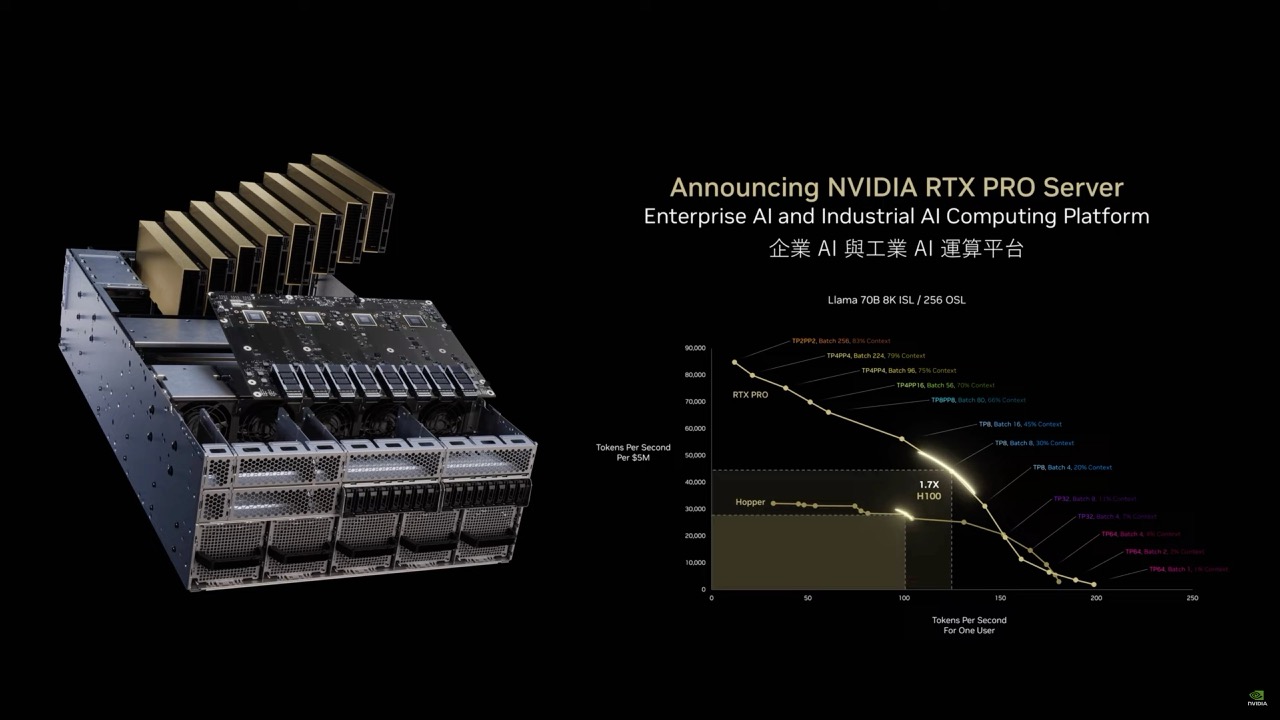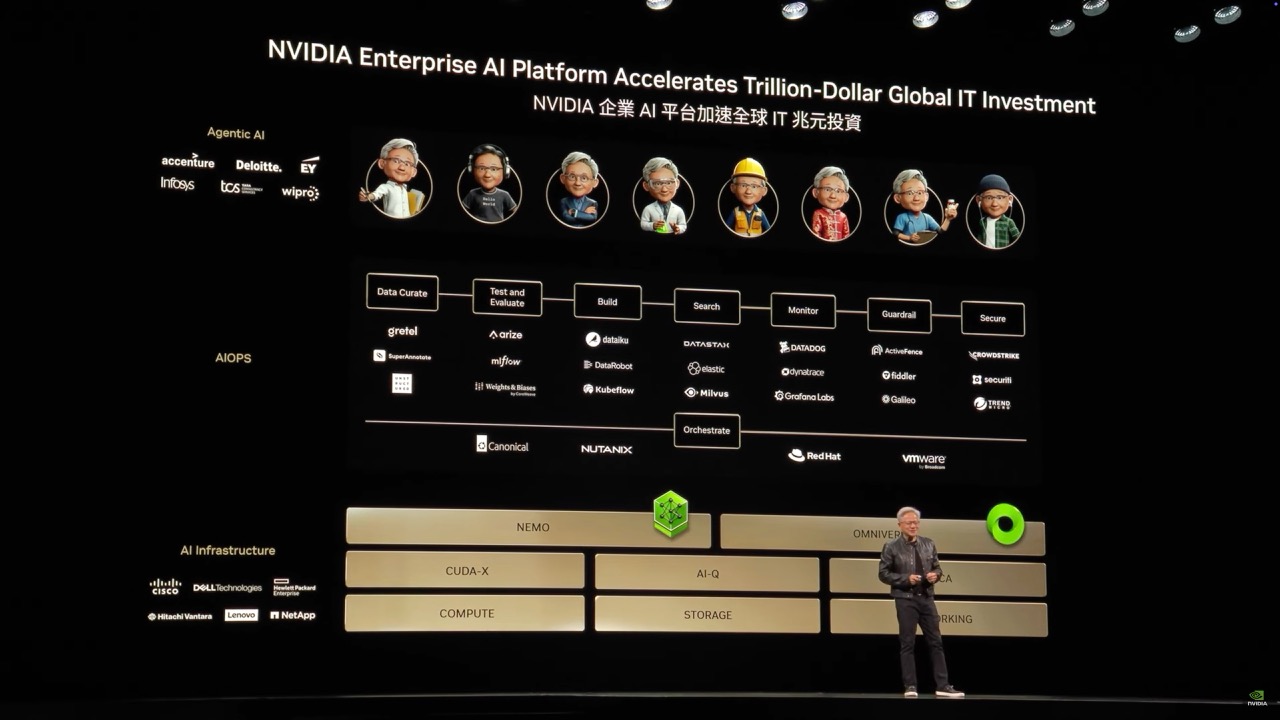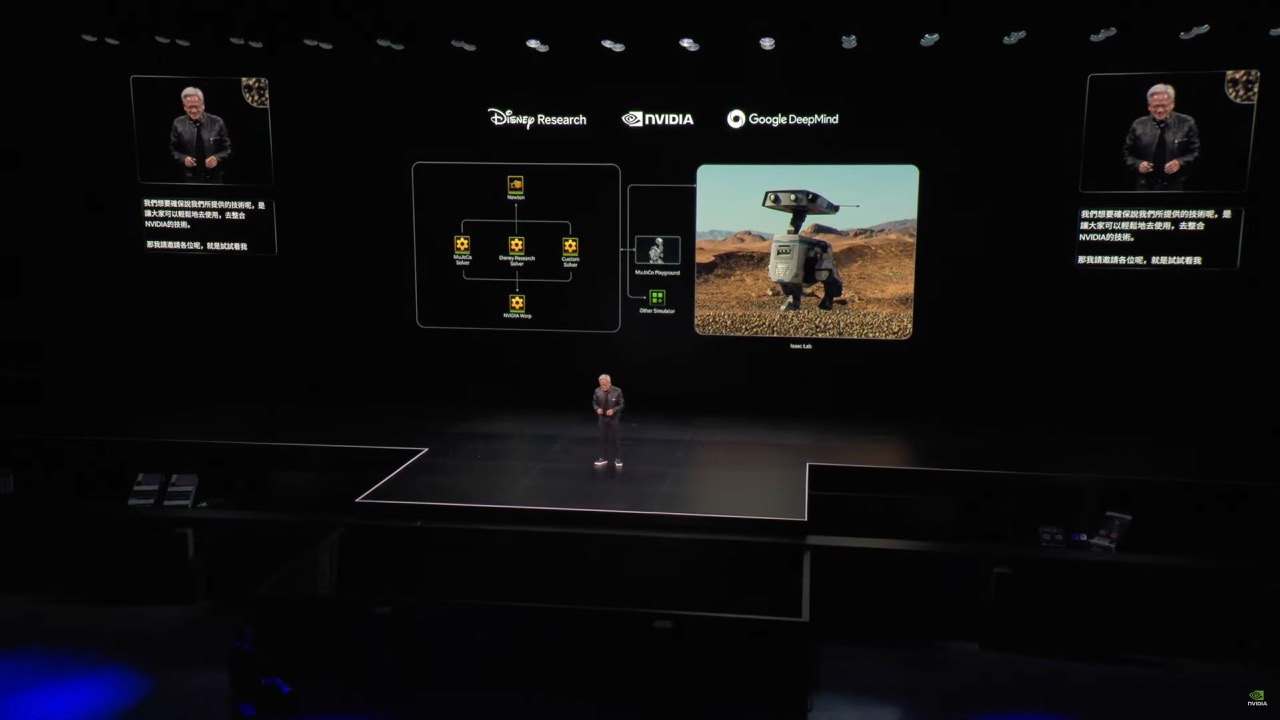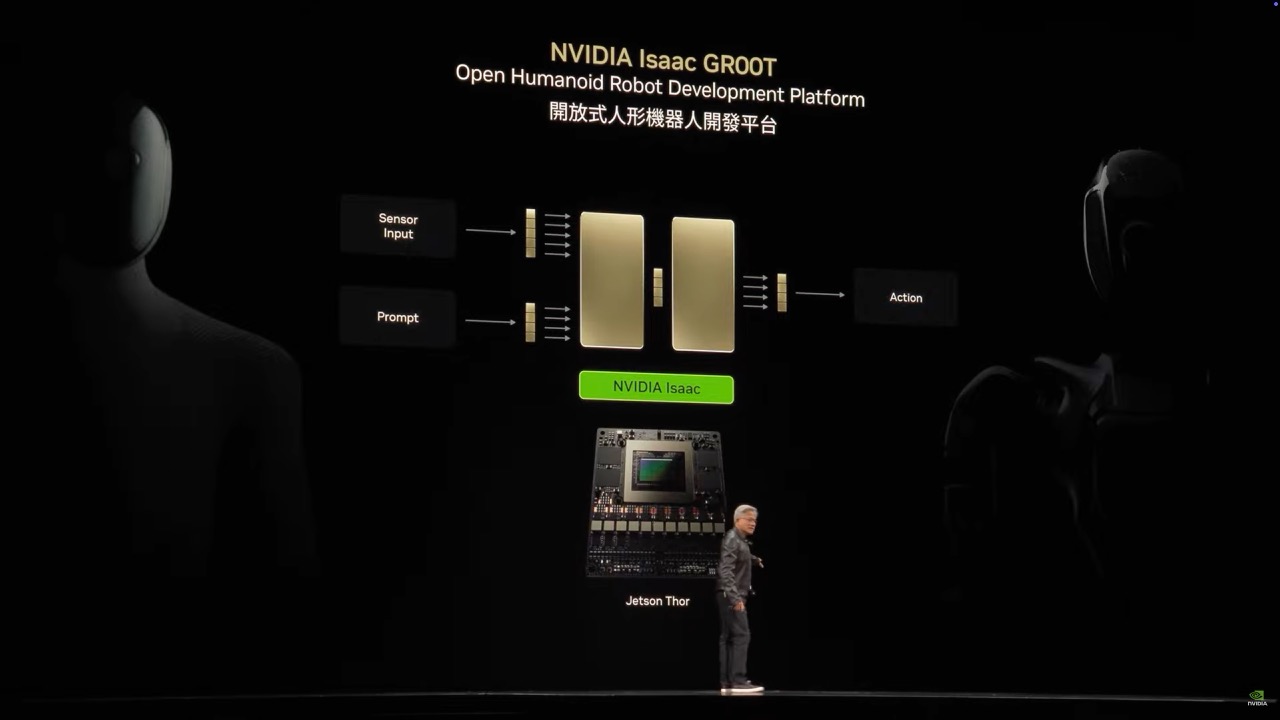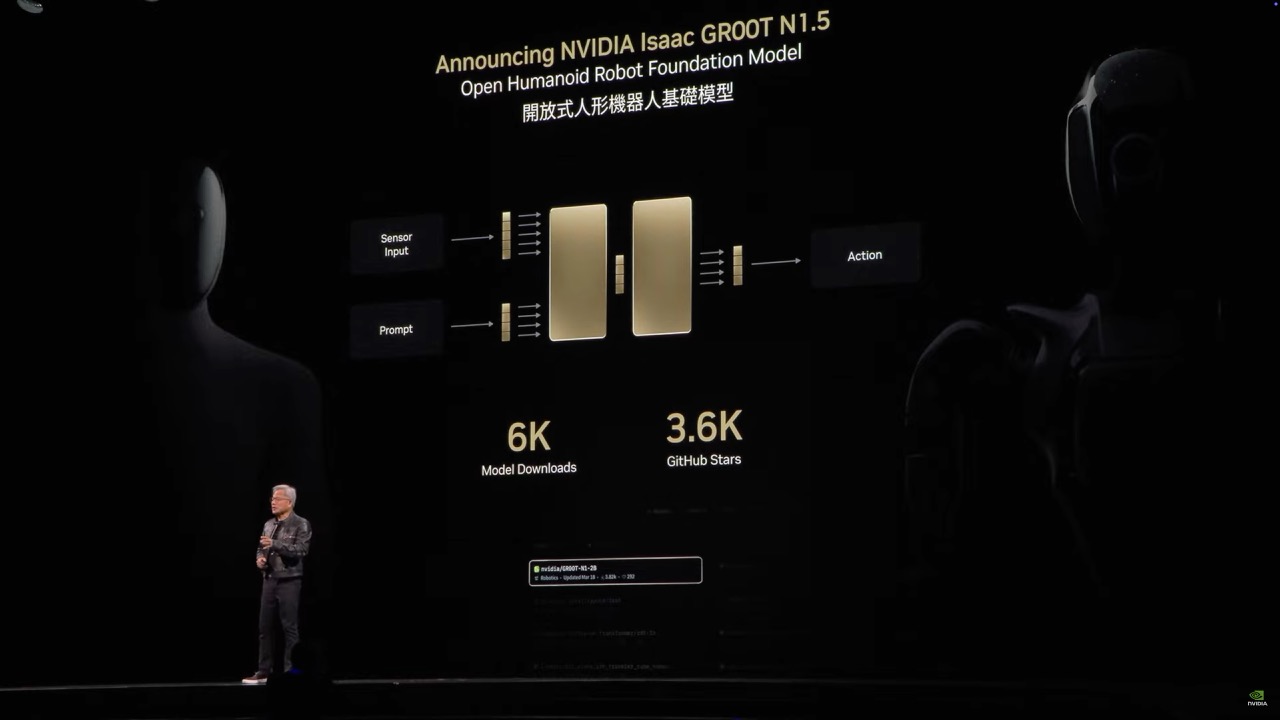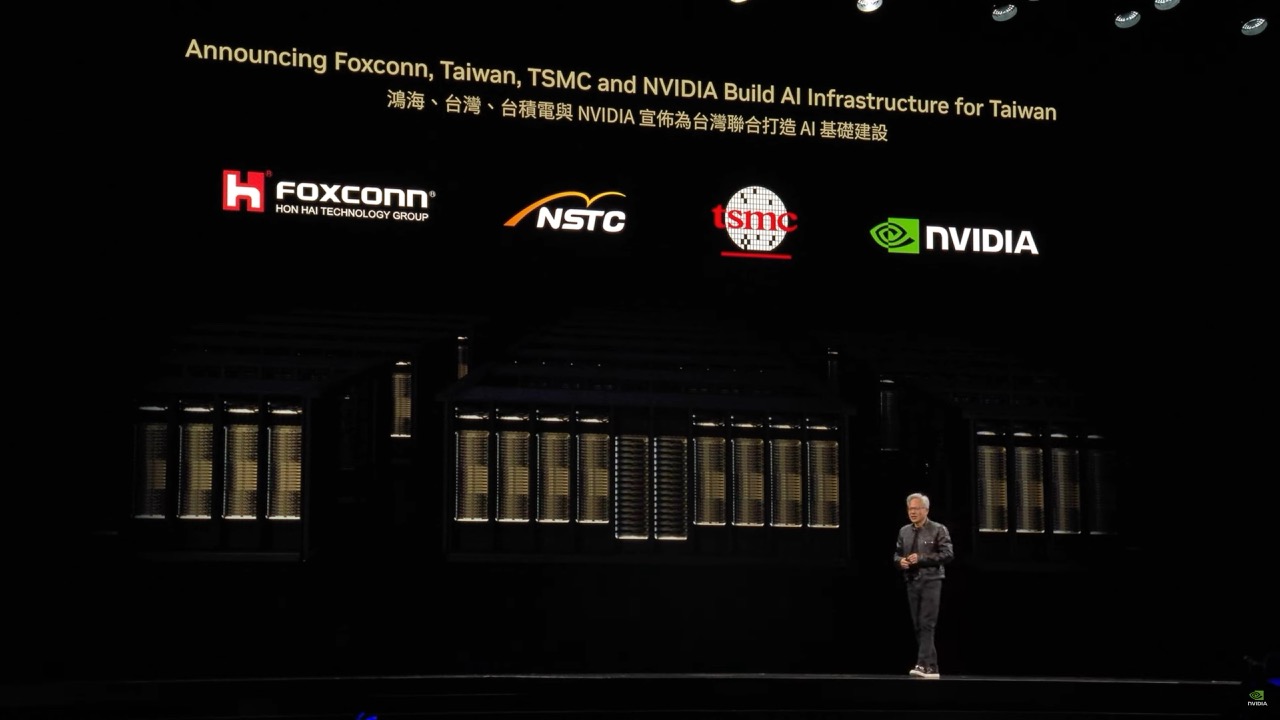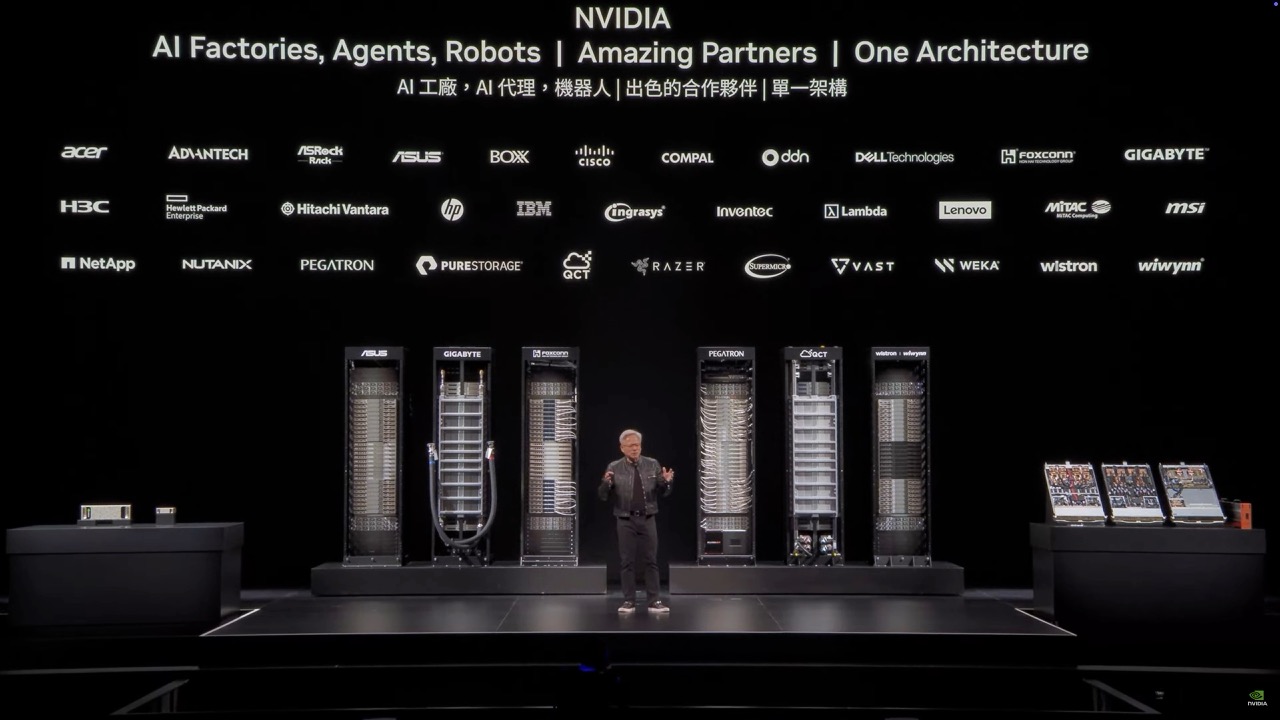AI Summary
At COMPUTEX 2025, NVIDIA CEO Jensen Huang outlined a future where AI, driven by NVIDIA's evolving infrastructure, transforms industries. He emphasized the critical role of Taiwan's manufacturing ecosystem. Huang also announced MVLink Fusion for open, semi-custom AI infrastructure, unveiled new RTX Pro Enterprise servers for integrating AI into traditional IT with "agentic AI," and presented an AI data platform with AIQ for unstructured data. The keynote concluded with a focus on physical AI through robotics, introducing the open-source Newton physics engine and Isaac Gr00t N1.5, with Taiwan playing a central role in NVIDIA's AI strategy.
In a keynote address at COMPUTEX 2025, NVIDIA CEO Jensen Huang unveiled the company's vision for the future of AI computing, revealing products and partnerships that will shape the next generation of AI factories, enterprise computing, and robotics.
The Dawn of AI Factories: How NVIDIA is Building Intelligence Infrastructure
NVIDIA's journey has evolved dramatically over its 30-year history. What began as a chip company has transformed into an essential AI infrastructure provider building the foundation for a new era of computing. Huang described this shift as moving from a $300 million chip industry opportunity to an AI infrastructure industry measured in trillions of dollars.
"We are at the epicenter of the computer ecosystem," Huang declared, positioning NVIDIA as a catalyst for creating new markets. He outlined how the company has reinvented itself multiple times, from the introduction of CUDA in 2006 to the realization in 2016 that a entirely new computing approach was needed.
This new approach requires rethinking every layer of the technology stack. "The processor is new, the software stack is new. It stands to reason the system is new," Huang explained. This led to the creation of DGX1, a system that initially bewildered the market but ultimately sparked the AI revolution when donated to OpenAI.
Beyond Data Centers: The Rise of Intelligence Infrastructure
Huang painted a vision of a new type of infrastructure emerging – an intelligence infrastructure that builds upon electricity and information infrastructures that came before it.
I know that right now when we say there's an intelligence infrastructure, it makes no sense. But I promise you in 10 years time, you will look back and you will realize that AI has now integrated into everything.
This intelligence infrastructure requires factories, but not traditional data centers. Huang reframed these as "AI factories" – specialized facilities that apply energy to produce something incredibly valuable: tokens. He noted that companies are already beginning to measure their output in tokens produced per quarter, much like traditional factories measure their production.
Blackwell: Engineering Marvel Powering the AI Era
The star of NVIDIA's AI factory ecosystem is Blackwell, the company's next-generation computing platform. Huang revealed the upcoming GB300, an upgraded version of Blackwell that delivers 1.5 times more inference performance, 1.5 times more HBM memory, and twice the networking capabilities compared to its predecessor.
A highlight of the presentation was a behind-the-scenes look at Blackwell's manufacturing process – an orchestrated collaboration involving TSMC, Foxconn, and numerous other Taiwanese partners. The video showcased the incredible precision and complexity involved in creating a system that contains 1.2 million components, 2 million meters of copper cable, and 130 trillion transistors.
"Blackwell is more than a technological wonder. It's a testament to the marvel of the Taiwan technology ecosystem," Huang said in tribute to the country hosting the event.
MVLink Fusion: Opening NVIDIA's Ecosystem to Customization
In a move toward openness, Huang announced NVIDIA MVLink Fusion, which allows partners to build semi-custom AI infrastructure by integrating their own components with NVIDIA technology.
"MVLink Fusion is so that you can build semi-custom AI infrastructure, not just semi-custom chips," Huang explained. This allows companies to create systems with varying combinations of CPUs, GPUs, and custom ASICs while still benefiting from NVIDIA's high-speed MVLink interconnect technology.
The company has partnered with LCHIP, Astera Labs, Marvell, MediaTek, Fujitsu, Qualcomm, Cadence, and Synopsis to support this open ecosystem, allowing organizations to build AI infrastructure tailored to their specific needs.
Bringing AI to Enterprise Computing
Recognizing the need to bring AI into traditional enterprise environments, Huang unveiled a new RTX Pro Enterprise and Omniverse server. This system bridges the gap between classical enterprise computing and modern AI workloads.
"It has to work with the traditional IT industry and it has to add a new capability," Huang explained. "The new capability for enterprise is agentic AI."
These agentic AIs – which Huang described as "digital workers" or "digital employees" – can reason, use tools, and collaborate with humans and other AI systems. They represent a solution to the global labor shortage projected to reach 30-50 million workers by 2030.
The RTX Pro server supports both traditional enterprise applications and AI workloads, featuring a new CX8 networking chip that enables high-speed communication between GPUs at 800 gigabits per second. Remarkably, this enterprise server delivers 1.7 times the performance of NVIDIA's renowned Hopper H100 system.
Transforming Data Storage for the AI Era
Alongside computational advancements, Huang introduced the NVIDIA AI data platform with AIQ, a new approach to storage designed for AI workloads.
"Humans query structured databases like SQL. But AI wants to query unstructured data. They want semantic. They want meaning," Huang explained. This requires a fundamentally different storage architecture where GPUs sit atop storage racks to handle compute-intensive tasks like embedding, indexing, and search.
NVIDIA has developed AI models and libraries for this purpose, creating what Huang called "the world's best" downloadable open-source reasoning model. The company is working with storage industry leaders including Dell, Hitachi, IBM, NetApp, and Vast to integrate these capabilities into their platforms.
The Future of Robotics: Physical AI Takes Shape
The final segment of Huang's keynote focused on robotics, which he framed as the natural extension of agentic AI into the physical world. "Agentic AIs – AI agents – are essentially digital robots," Huang said. "The reason for that is because a robot perceives, understands, and plans, and that's essentially what agents do."
To advance physical robotics, NVIDIA announced Newton, "the world's most advanced physics engine," developed in partnership with Google DeepMind and Disney Research. This GPU-accelerated, differentiable physics engine will be open-sourced in July 2024, enabling highly realistic robot simulation.
The company also unveiled Isaac Gr00t N1.5, an open-source platform for robotic development that has already been downloaded 6,000 times. A key innovation is Gr00t Dreams, which uses AI to amplify human demonstration data, allowing "a small team of human demonstrators to now do the work of thousands."
Huang emphasized the particular importance of humanoid robots, which he described as potentially "the next multi-trillion dollar industry" due to their ability to operate in environments designed for humans without requiring specialized infrastructure.
Taiwan's Central Role in the AI Revolution
Throughout the presentation, Huang highlighted Taiwan's crucial position in the global AI ecosystem. He announced that NVIDIA, Foxconn, TSMC, and the Taiwanese government would collaborate to build "the first giant AI supercomputer" in Taiwan to support the country's AI infrastructure and ecosystem.
Huang showcased how leading Taiwanese manufacturers – including TSMC, Foxconn, Wistron, Pegatron, Delta Electronics, Quanta, Wiwynn, and Gigabyte – are already developing digital twins on NVIDIA Omniverse for manufacturing processes, facility planning, and robotics training. Huang said:
It stands to reason that Taiwan at the center of the most advanced industry, the epicenter where AI and robotics is going to come from. This is also the largest electronics manufacturing region in the world. And so it stands to reason that AI and robotics will transform everything that we do.
In a surprise announcement, Huang revealed plans for a new NVIDIA Taiwan office called "NVIDIA Constellation," to be built at Beetho Sheiling. The new headquarters symbolizes NVIDIA's growth and commitment to Taiwan as a crucial partner in its AI strategy.
Looking Forward: A Once-in-a-Lifetime Opportunity
Huang concluded his keynote by emphasizing the unprecedented nature of the current technological moment.
For the very first time in all of our time together, not only are we creating the next generation of IT, we are in fact creating a whole new industry. This whole new industry is going to expose us to giant opportunities ahead.
As NVIDIA continues to advance its vision of AI factories, enterprise agents, and robotics, the partnerships formed with Taiwanese companies and institutions will be critical to realizing this future – a future where AI is integrated into everything, transforming industries and creating new possibilities on a global scale.
Recent Posts
